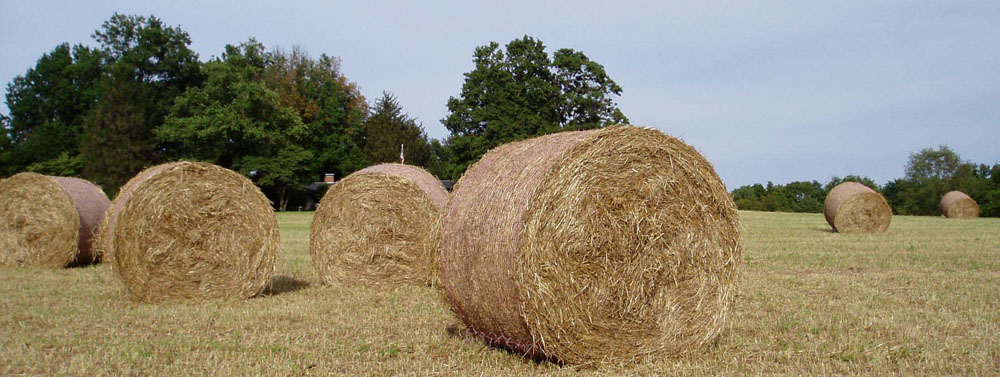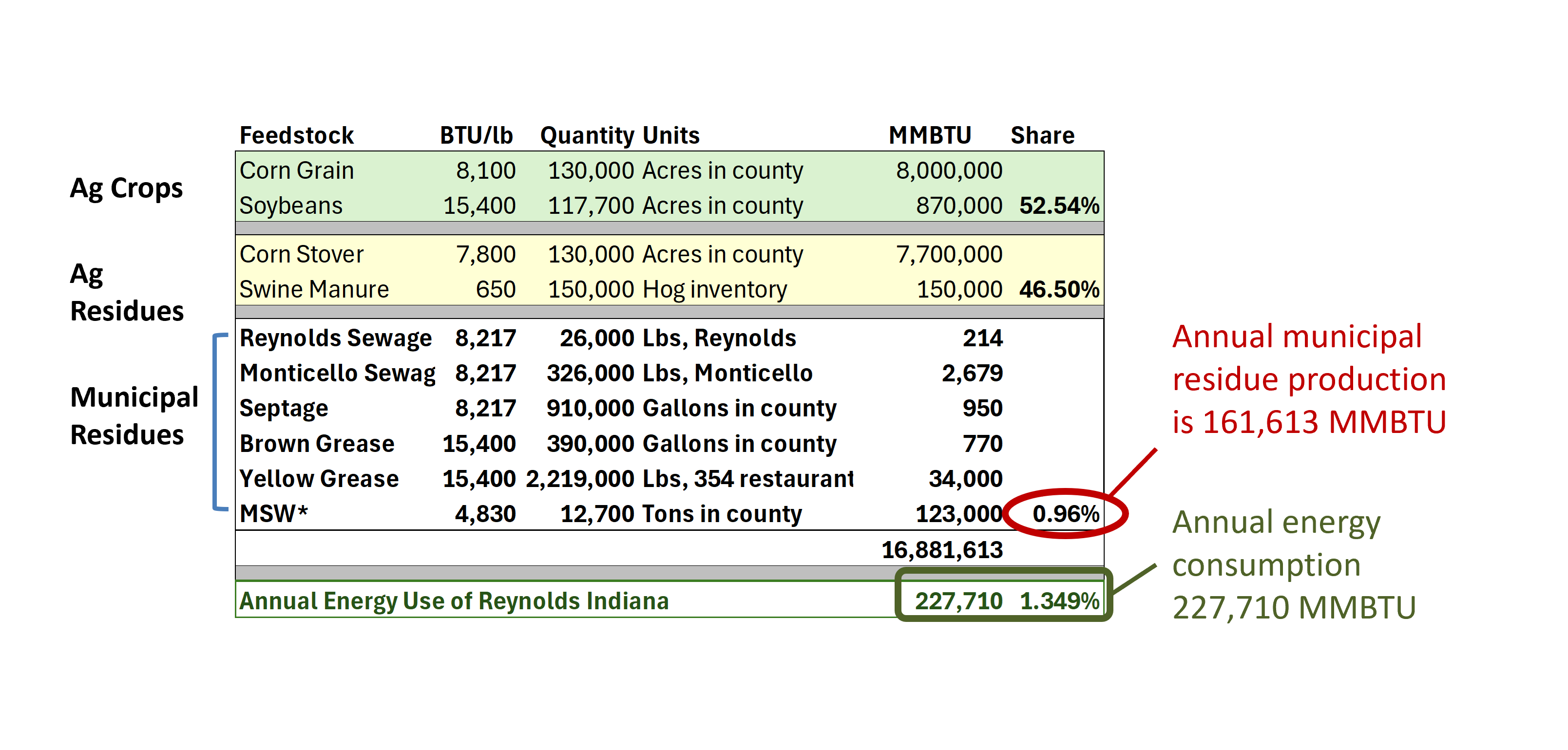BioTown, USA – Sourcing Local Biomass Energy Feedstocks
Twenty years ago the State of Indiana asked question, “Does a rural community produce sufficient organic wastes to provide energy for the community?” Fortuitously, Indiana’s BioTown, USA project invited Biomass Rules, LLC to help answer the question. Today’s table summarizes the findings.
The target community was the Indiana hamlet of Reynolds, Indiana, located in the large farming area of White County. Corn and soybeans were included even though they were too valuable to use for fuel. They are biomass. Agricultural residues of corn stover and manure are not without value, but they require innovations and a demand to realize their potential value.
The least valuable feedstocks in this case study are the municipal wastes: sewage, septage, brown grease, septage, yellow grease, and municipal solid waste (MSW).
- Sewage is human wastes that arrive at the wastewater treatment plant to be treated. Same species wastes are the greatest risk to the species (human waste to humans, hog waste to hogs). They contain species-specific pathogens. Treatment removes the pathogens and stabilizes the surplus elements. This evaluation included the nearby community of Monticello. Both communities were examining upgrading their treatment facilities.
- Septage is the material pumped from rural septic systems. This is regulated like sewage for the protection of the community. Septic cleanouts in Reynolds at the time were hauled 50 miles away to a designated repository for septic materials.
- Brown grease is organic waste pumped from food facility grease traps.
- Yellow grease is used vegetable oil from restaurant fryers.
- Municipal solid waste (MSW) is trash, or the solid waste sent to landfills.
At the time of the 2005 study, the waste materials in White County were estimated annually to be 161,613 million btus (MMBTU). This is 1 percent of the biomass energy tabulated in the table.
The Reynolds community annually used energy (fuel, power, and natural gas) was estimated to be 227,710 MMBTU. This was only 1.3 percent of all the summarized energy sources in White County. Municipal wastes without any positive market value at the time of the study, accounted for 71 percent of the annual energy consumption. It was not unreasonable that half of the energy required could be converted from the agricultural residues of corn stalks/stover or hog manure.
Like most brilliant ideas, BioTown, USA hit more barriers than it could overcome. But it played a role in moving the bioeconomy industries and policies to new levels. Most of the innovations quietly benefited the local activities of the participants. A few significant events are noteworthy.
- The BioTown, USA project was a lightning rod for attention for pulling undervalued organic wastes and residuals back into the economy. Ethanol Producer Magazine produced a great summary of the project in July 2007.
- BioTown Ag privatized the spirit of the public project. BioTown Ag stands on its own brilliance in innovation. Part of the reason Reynolds was selected as a pilot for the BioTown project was the proximity of BioTown Ag farm under Brian Furrer’s leadership, to the community.
- BioTown Ag’s manure digester is, at the time of this post, the largest producer of power from a farm digester in the U.S. according to the EPA’s AgStar data.
Lessons Learned – The BioTown, USA adventure was both brilliant and innocent. It was a frontier biomass project at a with limited historical templates for this sort of analysis. At the same time, the more notable, Billion Ton Studies, were underway. Those comprehensive biomass feedstock reports have continued for 20 years. But it is assuring that the 2023 Billion Ton Study reports that White County, Indiana produces 14,000 Billion BTUs which is close to the 2006 BioTown estimate of 16,900,000 MMBTUs.
Converting residuals into bioenergy didn’t change the price of energy. The energy markets are driven by energy demand. But the local use of undervalued, often costly, organic waste resources can lower the treatment costs to near zero. While reduced costs are still negative profit, converting organic leftovers to local bioenergy is a significant economic benefit. In 2005 and 2006, carbon markets were less developed and did not play a large quantitative role in the BioTown, USA analysis.



Comments
BioTown, USA – Sourcing Local Biomass Energy Feedstocks — No Comments
HTML tags allowed in your comment: <a href="" title=""> <abbr title=""> <acronym title=""> <b> <blockquote cite=""> <cite> <code> <del datetime=""> <em> <i> <q cite=""> <s> <strike> <strong>